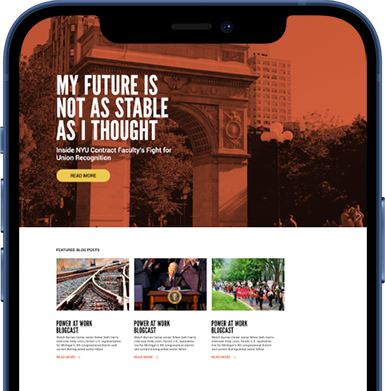One of the few sources of power for individual workers (i.e., workers unrepresented by a union) is to threaten to quit or actually to quit their jobs. If a worker does not get what they want from their employer --- a raise, better working conditions, or better work assignments --- they can withdraw their labor and provide it to someone else or, among the more entrepreneurial, create their own businesses.
Not every worker can use this lever of power. Changing jobs can be risky for workers. At times, equivalent or better jobs may not be available. Yet, when unemployment is low and jobs are plentiful, as they are right now, workers can and do quit their jobs. Around 4 million U.S. workers have quit their jobs each month since April 2021. That’s one important reason workers’ wages have been rising rapidly.
Employers generally do not like when their employees quit. Quits impose costs. Employers lose an employee’s skills and knowledge, even if it is only the knowledge of the employer’s systems. Replacing the employee entails time and money. The employer must train the new employee or, at least, suffer lower productivity while the new employee gains the experience required to be fully productive. The employer bears the risk that the new employee will fail. In many cases, the worker you know is better than the worker you don’t.
At a time when only a small minority of workers are represented by unions, this power to quit matters to workers’ ability to improve the quality of their jobs and lives. Employers’ response? Adding a provision to their contracts with millions of employees that deprives these employees of their power to quit: the non-compete agreement. These contract clauses aren’t new, but they are more common and more likely to be enforced.
We should understand non-compete agreements for what they are: a power grab by employers. Or, perhaps more precisely, an act of massive wage theft. The Federal Trade Commission estimated that its recently proposed rule banning non-compete agreements would raise workers’ wages across industries and job levels by $250 billion to $296 billion per year . A pay increase of that size would have added around 3% to the total amount of wages and salaries paid in the United States in 2021. The benefits would be concentrated among the 20% of employees the FTC estimates are covered by non-compete agreements and the employees blocked from moving into the jobs that would open if employers could not effectively prohibit their incumbent employees from quitting. A 2019 Economic Policy Institute survey suggested that non-compete agreements might be even more common and proliferating, so the number of workers sharing in this pay increase might be much higher.
The U.S. Treasury Department addressed the anti-competitive effects of non-compete agreements in white papers published in 2016 and 2022. Worker-focused think-tanks also analyzed them and their effects on workers in greater detail here and here. FTC Chair Lina Khan laid out her arguments for the proposed rule in this New York Times op-ed. States have made non-compete agreements unenforceable or limited them. We don’t need to rehearse the full analyses here. But it is worthwhile briefly to address three arguments commonly offered in support of non-compete agreements.
First, non-competes purportedly protect employers’ trade secrets. Simply, if employees cannot quit, they cannot take inside information to a competitor. This argument is weak. Trade secrets are already protected by the aptly named Trade Secrets Act , as well as other state and federal laws. Perhaps a belt-and-suspenders approach could be justified for selected information if non-compete agreements had no negative effects, but they do.
Second, non-competes allegedly promote worker training because employers are said to hesitate to invest in skills and knowledge that workers could take to a competitor. At most, this argument applies only to training related to general as opposed to firm-specific skills and knowledge. The latter category of training is valueless to competitors. Also, again, there is a ready and preferred alternative. If employers provide training to increase workers’ productivity, employers should pay their trained employees more and promote them commensurate with that increased productivity. Workers typically will not change jobs to get the same pay and working conditions, especially given the attendant risks and uncertainties.
Third, some argue that employers with high costs due to frequent employee turnover might use non-competes to attract workers uninterested in switching jobs. I’ve never seen this in the real world. Nonetheless, alternative means of sending signals to these non-job-switching workers are obvious. Employers could advertise the possibility of retention bonuses, seniority-related pay increases, job protections (think academic tenure), or other benefits tied to extended service with an employer. With the right carrots, a non-compete agreement’s stick should not be necessary.
In sum, there is no compelling argument for non-compete agreements. There are a lot of arguments against them. From an economic and policy perspective, the verdict is obvious: except in the rarest of clearly defined and tightly bounded instances, all employment non-compete agreements should be prohibited.

